Hello,
Today, we’re heading to the Kushiro Washo Market to have a katte-don for breakfast.
This market, established in 1954, is the oldest in Kushiro. Along with the Hakodate Morning Market and Sapporo Nijo Market, it is considered one of the three major markets in Hokkaido. The name “Washo” comes from the lively call of “Wasshoi, wasshoi,” and from the concept of “wa-shite-shōu,” meaning to do business harmoniously. The market is home to about 50 shops, including fresh seafood stores, salted and dried fish, specialty foods, produce shops, and meat vendors. It is beloved by locals as the community’s kitchen, and is also popular with tourists.
こんにちは、
今日は勝手丼を食べるために、釧路の和商市場に行きます。
この市場は1954年に開設された釧路で最も古い市場です。函館朝市や札幌二条市場とともに、北海道三大市場の一つとされています。「和商」の名前は、「わっしょい、わっしょい」という賑やかな掛け声と、「和して商う」という、調和を持って商売をするという考えから来ています。市場には、新鮮な海産物店、塩干物、特産品、野菜店、肉屋など約50軒の店が並んでいます。地元の人々にとっては地域の台所として愛されており、観光客にも人気があります。

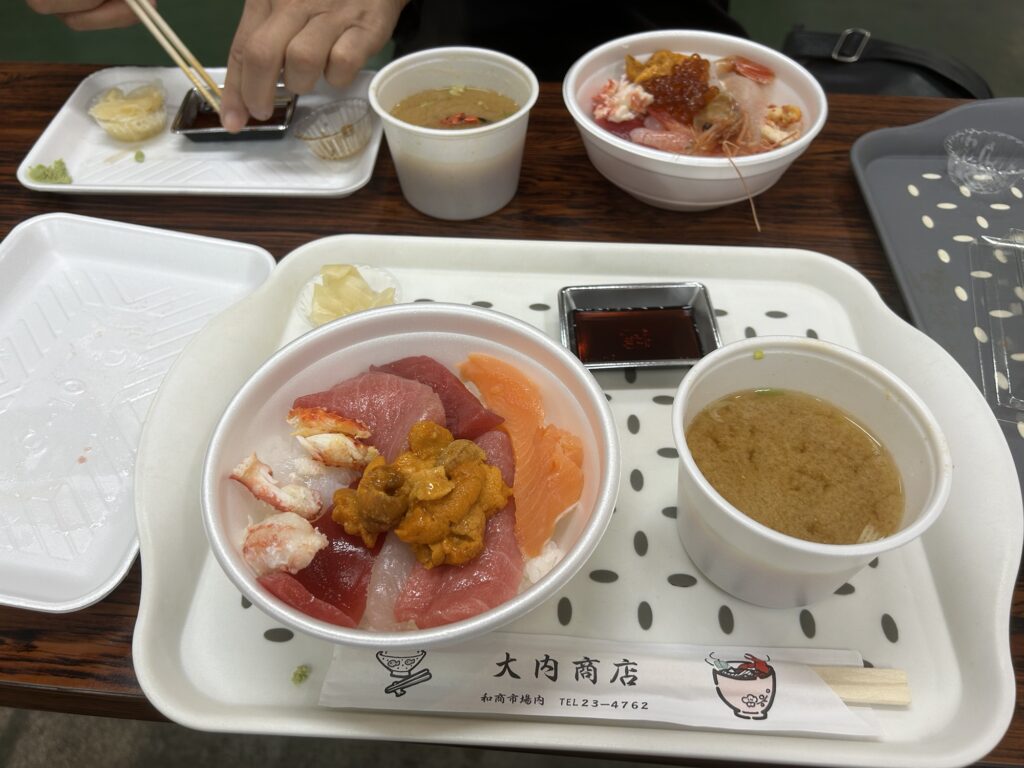
The market’s specialty is the katte-don, where you select your favorite seafood and assemble it into a custom bowl of rice, making your own original seafood donburi. First, you buy the size of rice you want at a prepared foods shop inside the market. With your rice in hand, you stroll from store to store, searching for your desired toppings. There’s a wide variety of fresh seafood options at each stall, making it hard to choose. Once you’ve picked your favorite ingredients, the vendors will top your rice with them, and voilà, your very own katte-don is ready! You can also buy crab soup and pickles, and enjoy your meal at the market’s eating area.
Visitors staying at nearby hotels can swap their hotel breakfast for a katte-don, and that day, around ten businessmen arrived by minivan to enjoy their breakfast here. Be careful if you come at the same time as these groups, as it might take longer to get served.
この市場の名物の勝手丼は、釧路市発祥で、自分の好みの海鮮ネタを選び、ご飯の上に乗せて作るオリジナルの海鮮丼のことです。まず、お店で好きなサイズのご飯を購入します。そのあと、各店を回りながら自分の好みのトッピングを探します。新鮮な海産物が豊富にあって選ぶのが大変です。お気に入りのネタを選んだら、店の人がご飯の上にトッピングしてくれて、あっという間に自分だけの勝手丼が完成します!また、カニの味噌汁や漬物も購入できるので、市場内のイートインエリアで食べましょう。
近くのホテルのなかには希望する宿泊者に、ホテルの朝食を勝手丼に変更するサービスをしているところもあります。この日も、約10人のビジネスマンがミニバンで勝手丼を食べに来ていました。こうしたグルーブといっしょになると、時間がかかるので注意しましょう。
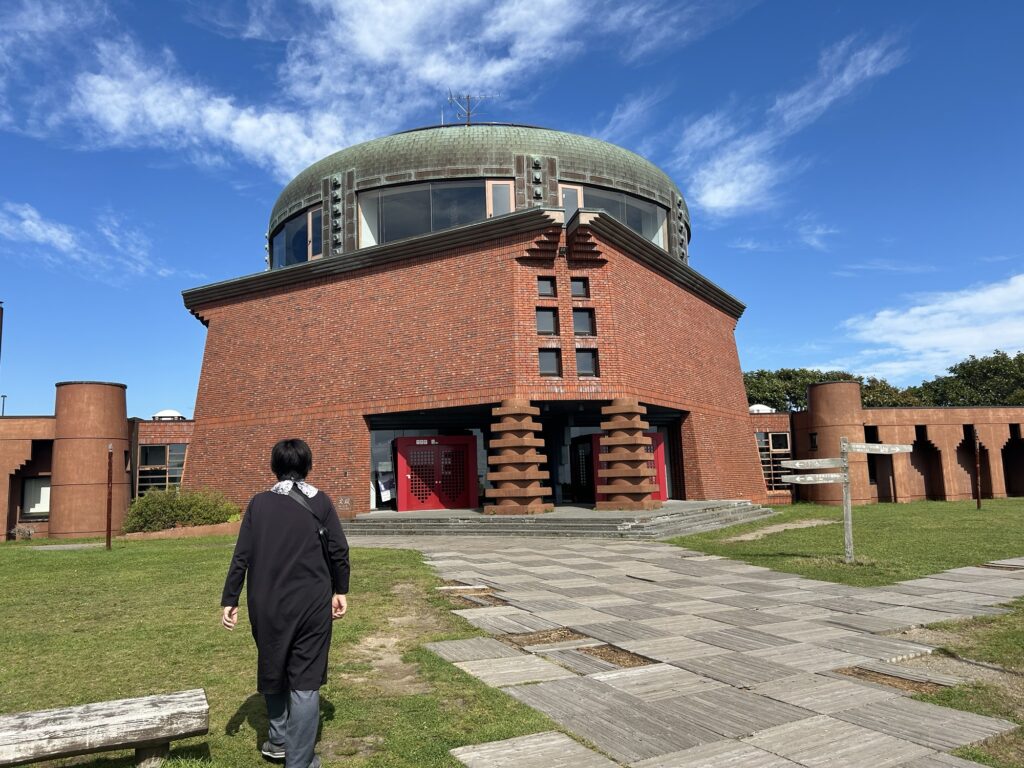
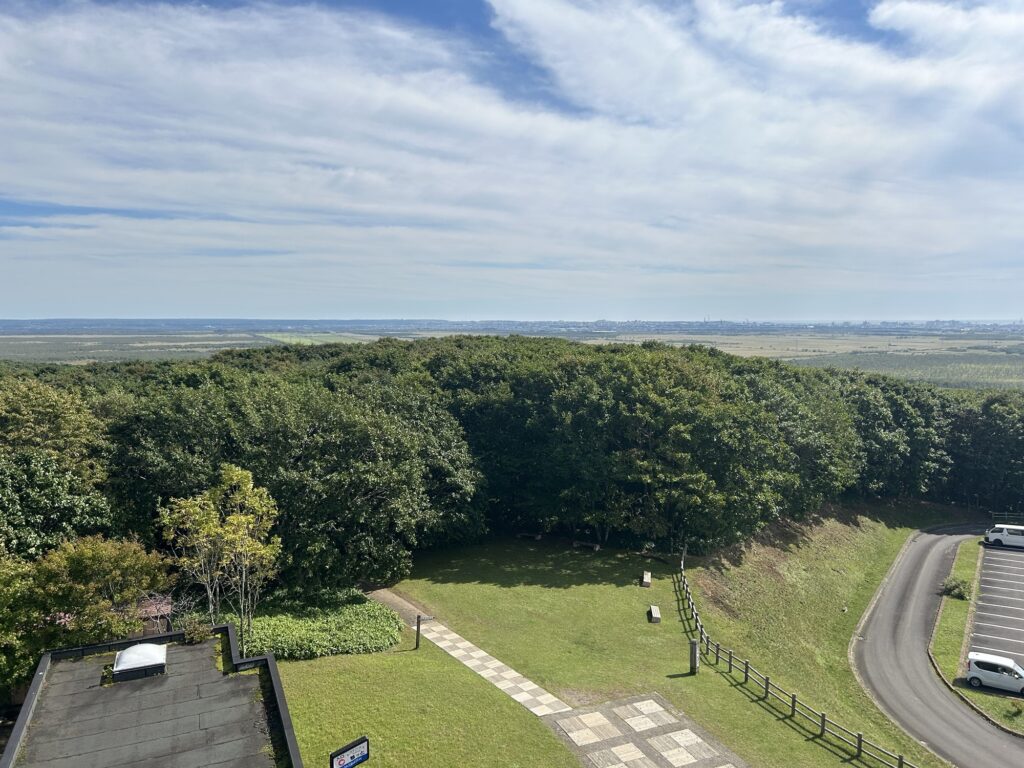

Next, we went to the Kushiro Shitsugen Observatory.
This observatory has a unique design inspired by the “Yachibozu” plants found in the wetlands in the area. Inside, there’s a diorama of the wetland, along with panels explaining the formation of the Kushiro Wetlands, its flora and fauna, and nearby archaeological sites. You can enjoy the view of the wetlands from the observation room and rooftop.
There is a one-hour walking trail that starts from the observatory, which includes a satellite observation deck. From here, you can experience a vast landscape that feels like an African savanna. However, we learned that there was a recent bear sighting along the trail, so the path was closed for safety. It was a bit disappointing since we were looking forward to walking the trail.
次に、釧路湿原展望台に行きました。
ここは、地域の湿地帯で見られる「ヤチボウズ」という植物をモチーフした独特のデザインの展望台です。展望室や屋上からは、湿原の美しい景色を楽しむことができます。
展望台から出発する1時間のウォーキングトレイルもあり、その途中にはサテライト展望デッキがあります。ここから見る景色は、まるでアフリカのサバンナのような広大なものです。しかし、そのトレイルで最近クマの目撃情報があったようで、この日は閉鎖されていました。楽しみにしていたのに残念!
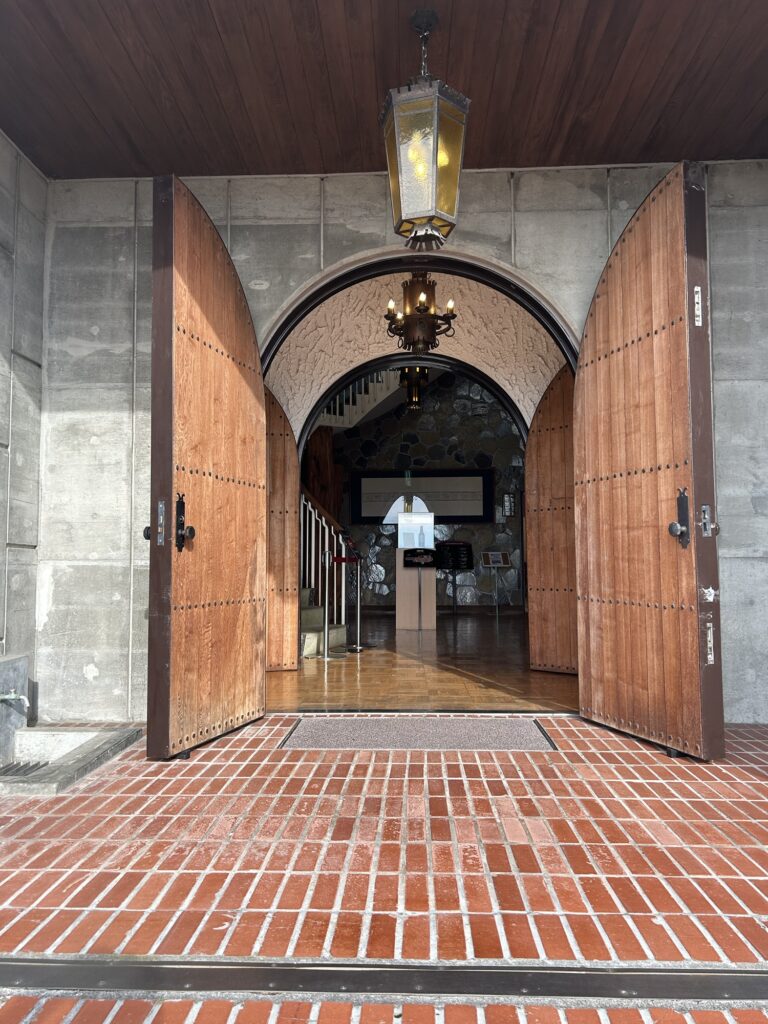
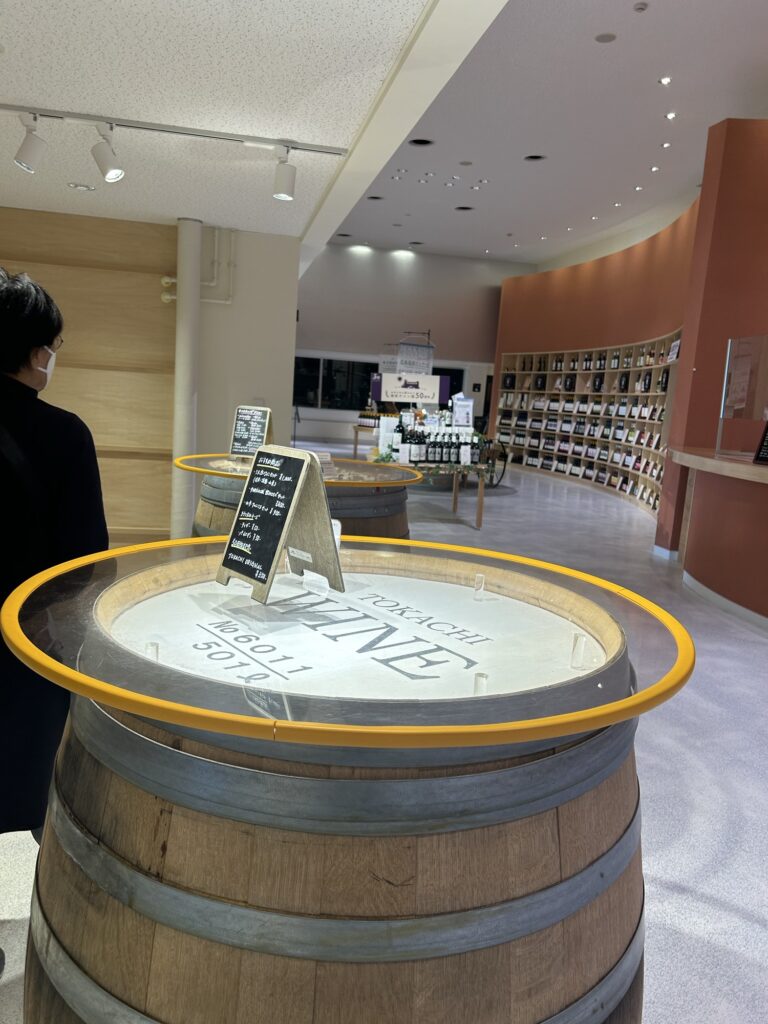
Next, we visited the Wine Castle in Ikeda Town.
The official name of the “Wine Castle” is the “Ikeda Town Grape and Wine Research Institute.” It is called the Wine Castle because its architecture resembles a medieval European castle. Inside, you’ll find French oak barrels where wine quietly matures, along with a collection of old vintages. On the first floor, there’s a shop selling Tokachi wines and local specialties. On the fourth floor, there’s a restaurant, making this a fun place to visit.
At the tasting corner, you can sample a variety of Tokachi wines in small quantities for a reasonable price. The castle also offers tours, and you can freely explore from 9 AM to 5 PM. To the east of the castle, there’s a wine production facility where you can observe the bottling process.
次に、私たちは池田町にあるワイン城を訪れました。正式名称は「池田町ぶどう・ワイン研究所」です。中世ヨーロッパの城を模した建築が特徴で、そこから「ワイン城」と呼ばれています。館内にはフランス産オークの樽があり、静かにワインが熟成されています。また、昔のヴィンテージワインも収蔵されています。1階には、十勝産のワインや地元の特産品を販売するショップ、4階にはレストランもあります。 試飲コーナーで十勝ワインを試すことができます。城内ではツアーもあり、午前9時から午後5時まで自由に見学できます。城の東側のワインの生産施設では、ボトリングの工程を見学できます。
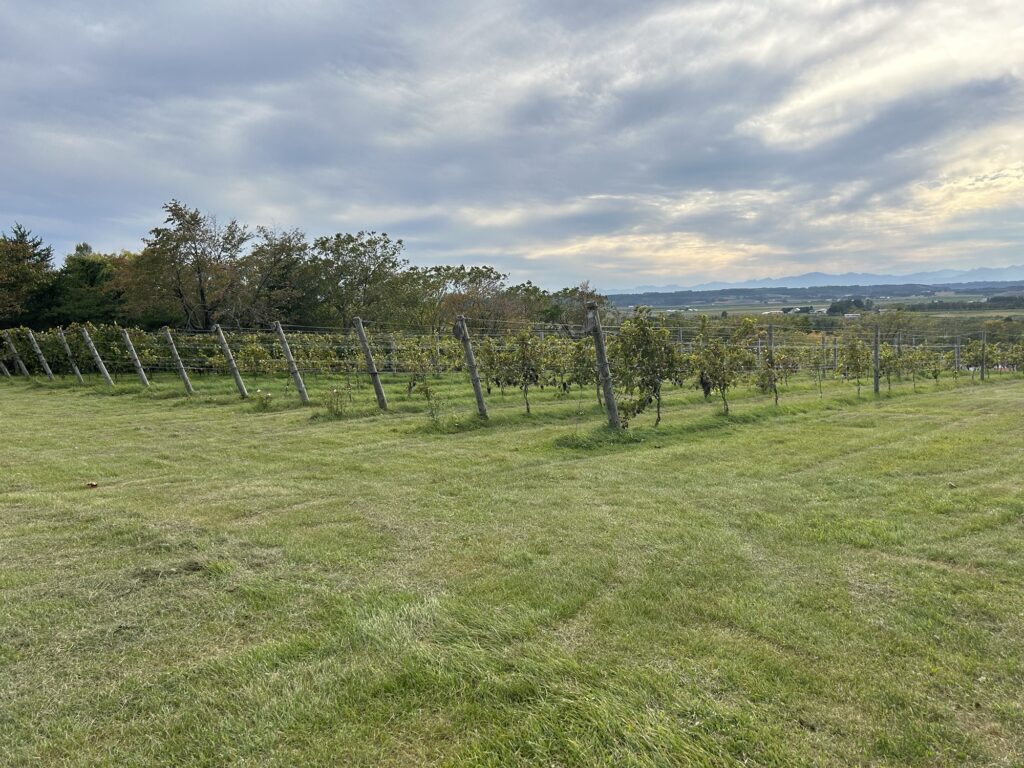
On the southern slope of the Wine Castle is a vineyard planted with unique varieties of grapes, such as “Kiyomai” and “Yamakou,” which are only found in Ikeda Town. These grapes are harvested in autumn and turned into rich, flavorful Tokachi wines.
ワイン城の南斜面には、池田町でしか見られない「キヨマイ」や「ヤマコウ」などのユニークな品種のぶどうが植えられたぶどう畑があります。これらは秋に収穫され、十勝ワインに生まれ変わります。
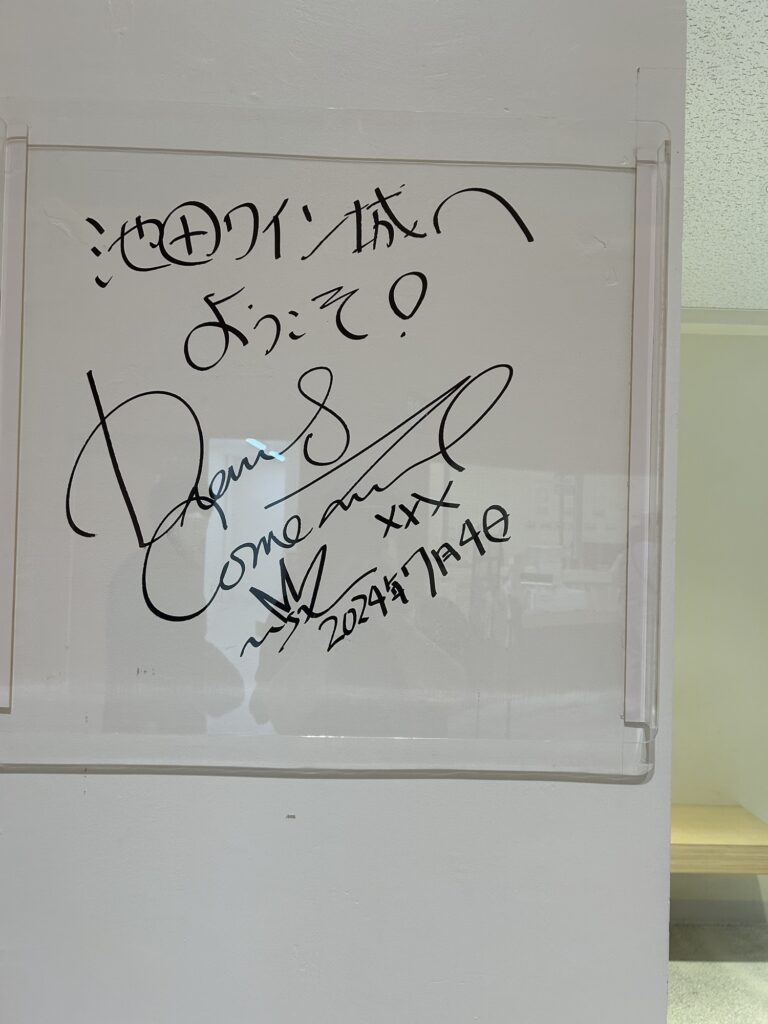
The Wine Castle recently celebrated its 50th anniversary, and to mark this occasion, along with the 35th anniversary of the debut of the famous music group DREAMS COME TRUE (whose member Miwa Yoshida is from Ikeda Town), a “DREAMS COME TRUE Day” event was held in July. A signed poster from the event was displayed in the castle.
ワイン城は50周年だそうで、池田町出身の吉田美和が所属するDREAMS COME TRUEのデビュー35周年野イベント「DREAMS COME TRUEデー」が開催されました。その際、DREAMS COME TRUEがサインしたポスターが展示されていました。
Next, we went to the Ryugetsu Sweetpia Garden Store.
Ryugetsu is a long-established confectionery company founded in 1947. It is famous for its Baumkuchen shaped like white birch firewood, called “Sanpōroku,” and its “Anbata-sand” (a sweet sandwich with red bean paste and butter). The Sweetpia Garden Store is located near the Otofuke-Obihiro Interchange on the Doto Expressway and features a shop, café, and a candy-making workshop, as well as a facility where you can observe the production process of “Sanpōroku.”
This store is the only place in Japan where you can buy the leftover pieces of “Sanpōroku.” Every day, there’s a long line before the store opens. The number of available pieces and types changes daily, and they are sold for around 500 yen per bag. They start handing out tickets at 8:30 AM, and the sale begins when the store opens. You can buy only one bag per person, and even on weekdays, the stock sells out by 9 AM. Unfortunately, since we arrived later in the afternoon, we couldn’t get any.
次に、私たちは柳月スイートピアガーデン店に行きました。 柳月は1947年に創業した老舗の製菓会社で、白樺の薪の形をしたバウムクーヘン「三方六」や、あんこバターサンド「アンバタサンド」で有名です。スイートピアガーデン店は道東自動車道の音更帯広インターチェンジの近くにあり、ショップ、カフェ、キャンディ作りのワークショップがあり、「三方六」の製造過程を見学できる施設もあります。 この店は、日本で唯一「三方六」の切れ端部分を購入できます。この切れ端を目当てに毎日、店が開店する前には長い行列ができます。販売される切れ端は毎日変わり、1袋約500円で販売されます。チケットが午前8時30分から配布され、1人1袋のみ購入できますが、平日でも午前9時には売り切れてしまいます。残念ながら、私たちは午後に到着したため、買えませんでした。

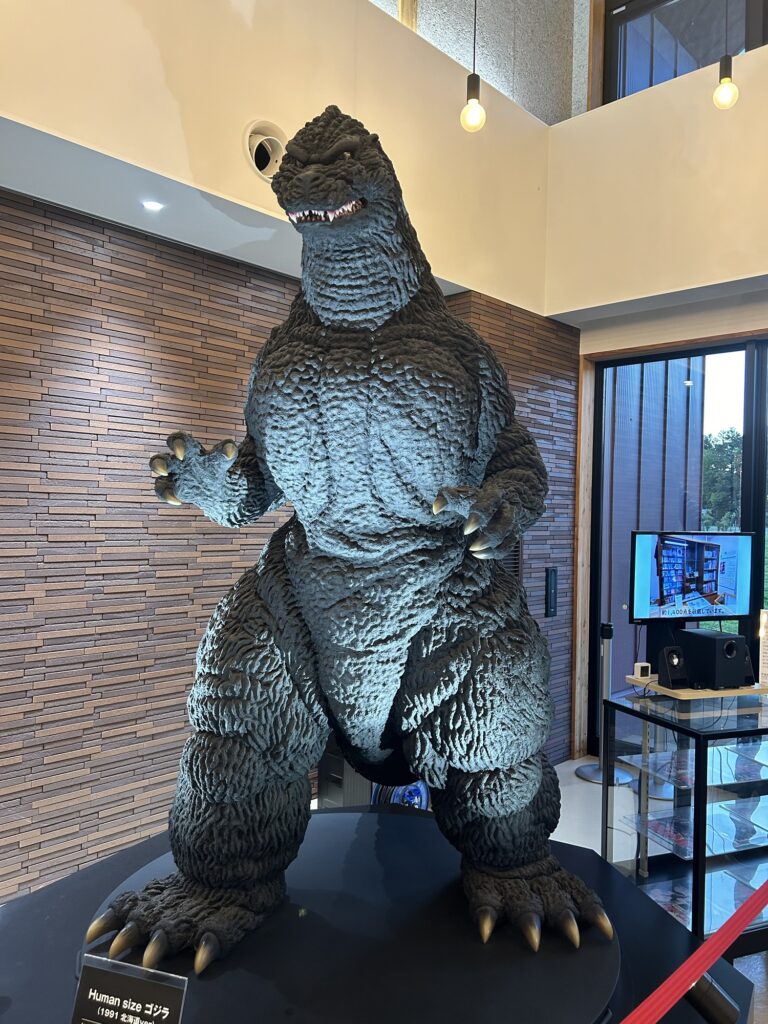
Next, we stayed at the Otofuke Natsuzora no Furusato roadside station, located next to the Ryugetsu Sweetpia Garden Store.
This place is a popular spot for campers, and that day, it was full of campers from all over Japan, with various license plates on the vehicles.
Otofuke Town is known for its agricultural activities, producing wheat, beans, and many other crops under the “Tokachi Clear Skies.”
There were also exhibits honoring famous classical musician Akira Ifukube, who grew up in Otofuke, as well as a large Godzilla figurine, 2 meters tall with a 3-meter-long tail, which was quite impressive.
次に、私たちは柳月スイートピアガーデン店の隣にある、「おとふけなつぞら」のふるさと道の駅に行きました。今夜はここで車中泊します。 ここはキャンパーに人気のスポットで、この日もいっぱいでした。また、音更町のクラシック音楽家、伊福部昭は映画「ゴジラ」のテーマ曲を作曲したことで有名で、彼を讃える高さ2メートル、尾の長さが3メートルのゴジラが、とても印象的でした。
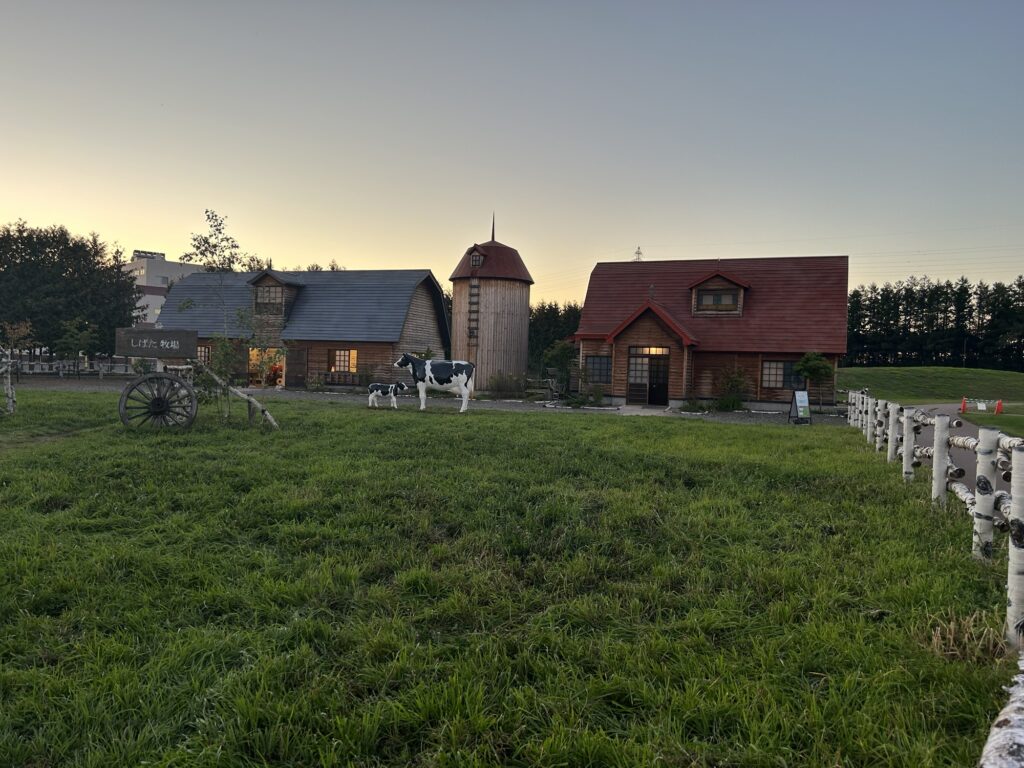
At the roadside station, there’s also a set modeled after the NHK TV drama Natsuzora (aired in 2019). It was a nostalgic experience to visit.
この道の駅には、2019年に放送されたNHKのテレビドラマ「なつぞら」を模したセットがあります。
The station also has a famous curry shop called “Indian.”
The first “Indian” curry shop opened in Obihiro in 1968. According to the owner, it is the second-best curry shop in Obihiro, because the best is the curry made by his wife and mother. We tried the curry, and it was simple but addictive in flavor. See you again!
道の駅には、「インディアン」という有名なカレー店があります。インディアンは1968年に帯広で開店しました。店主によると、帯広で一番おいしいカレーは店主の妻と母が作るカレーで、この店のカレーは2番目だそうです。私たちもカレーを食べましたが、シンプルながらも癖になる味でした。
では、また!
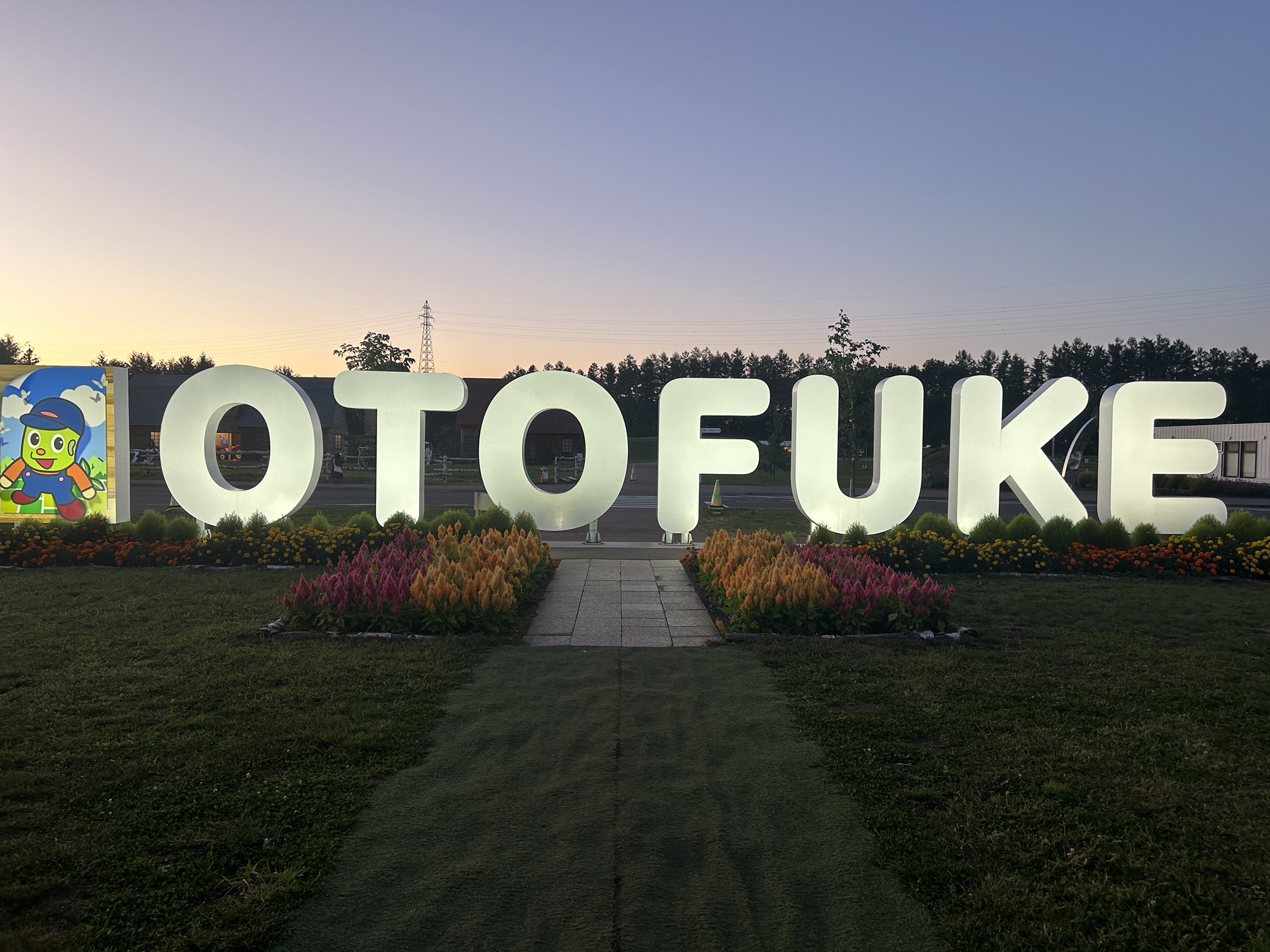
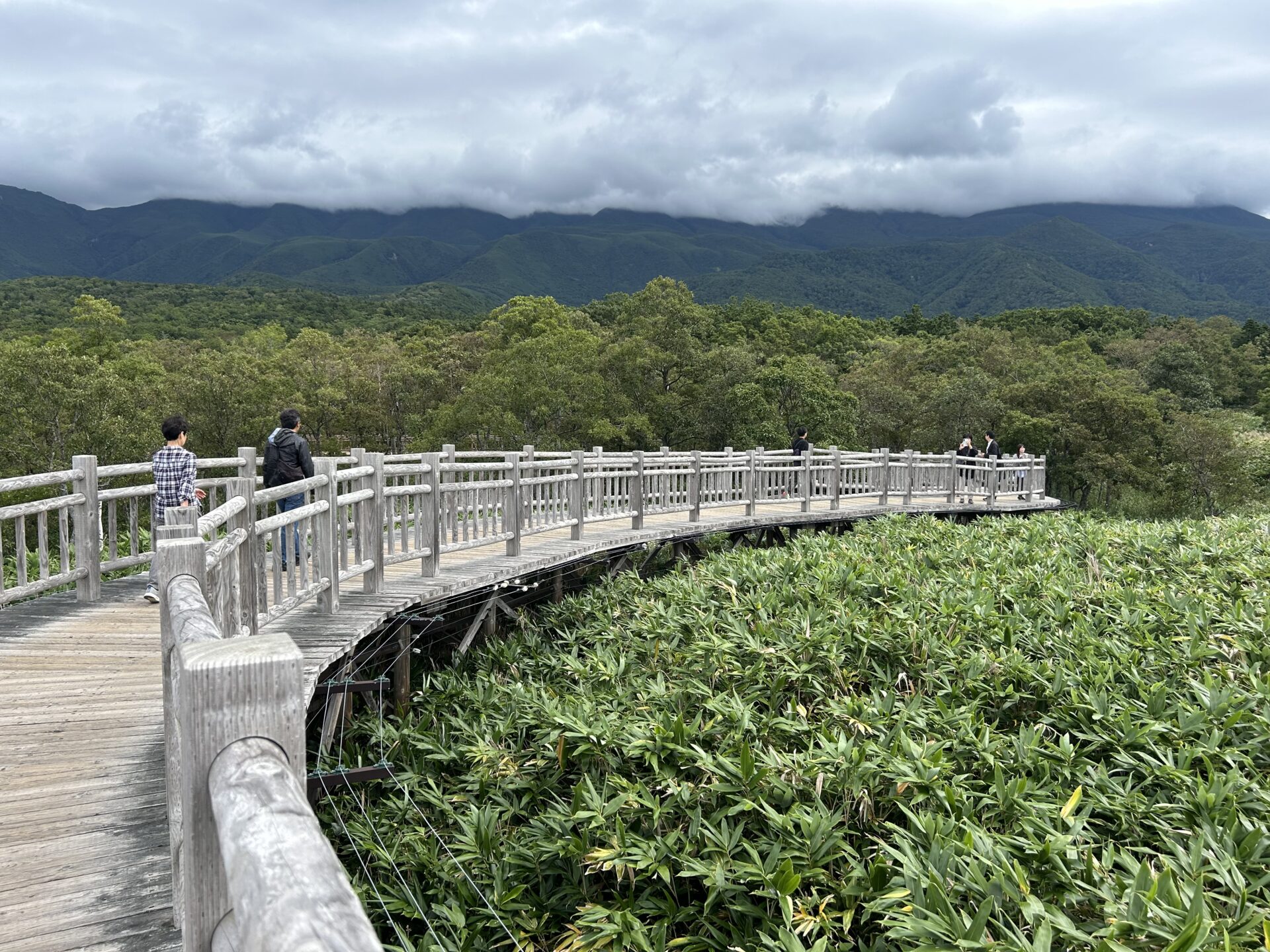
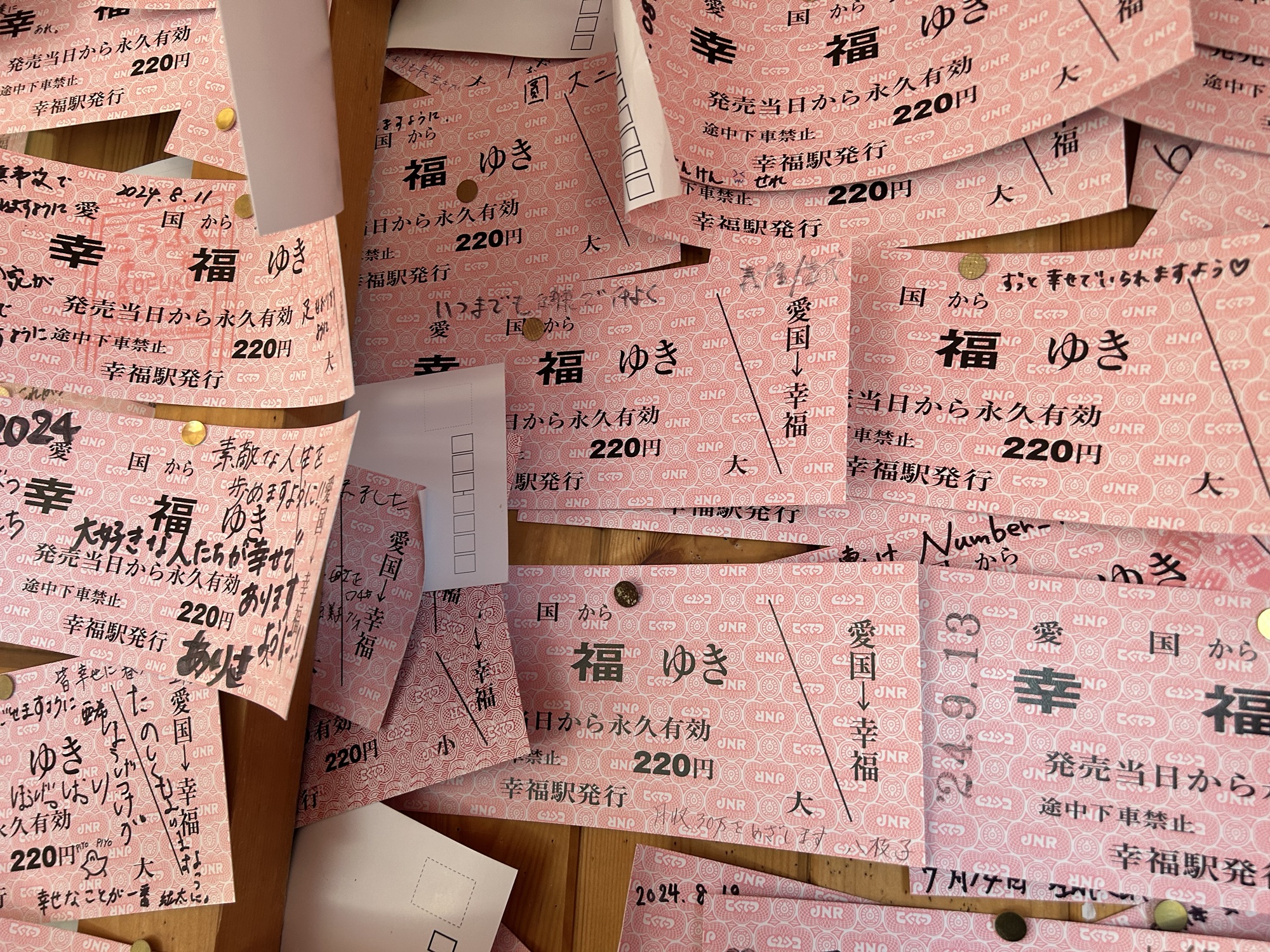
コメント